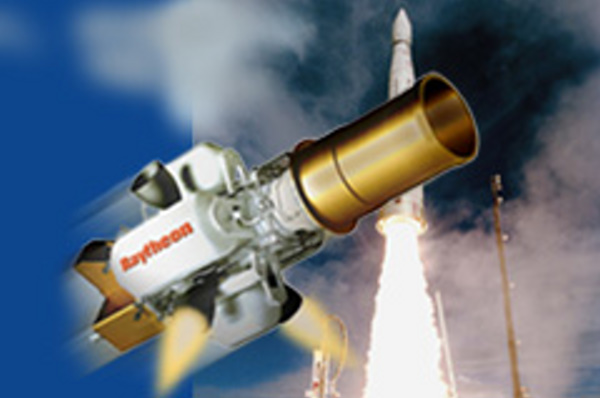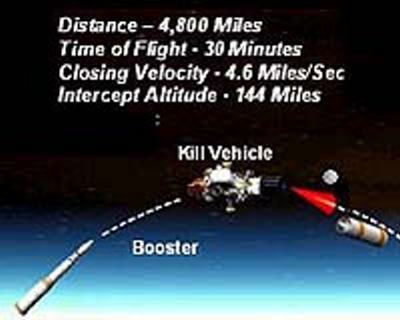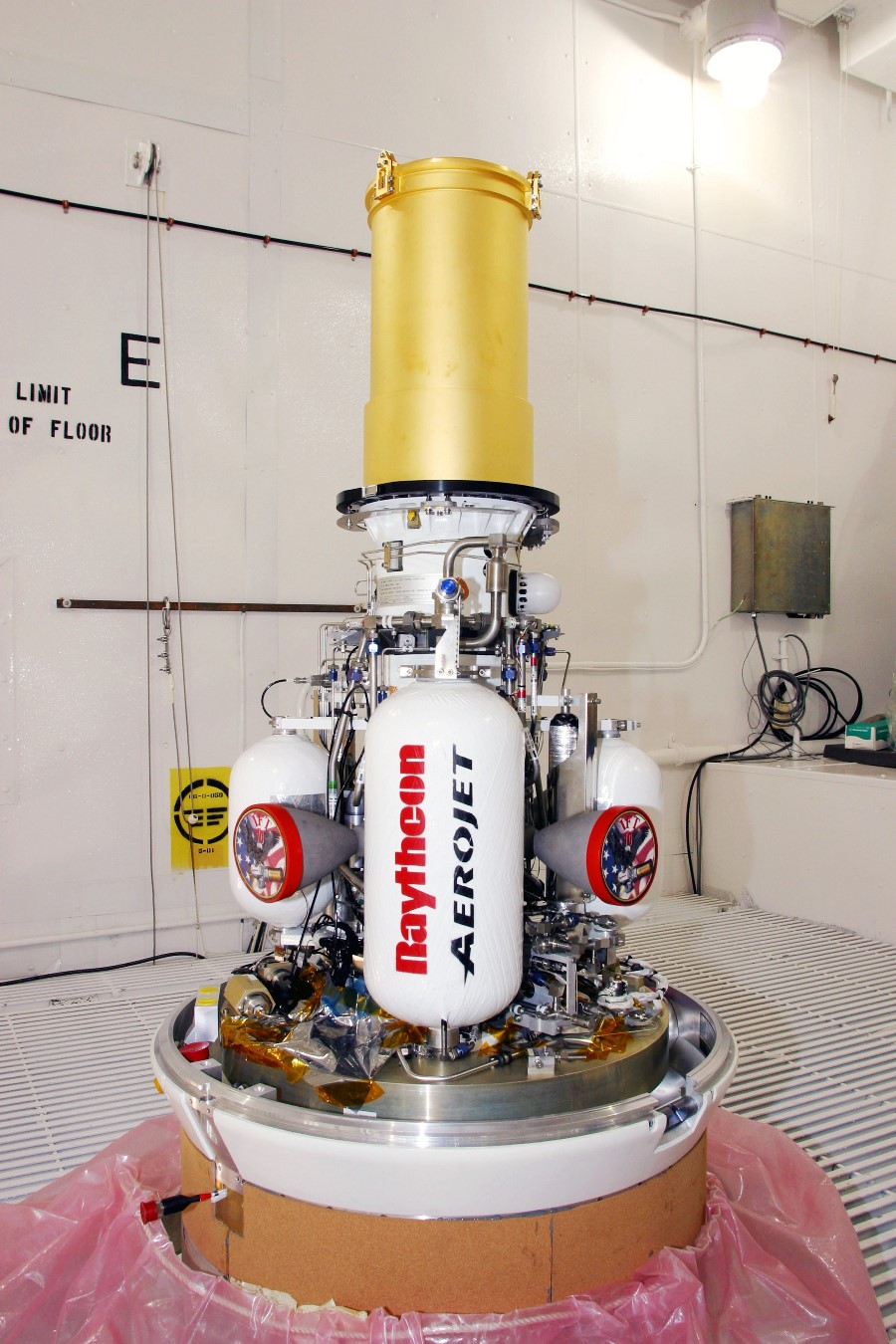|
|
|
|
..
The Exoatmospheric Kill Vehicle (EKV) is the intercept component of the Ground Based Interceptor (GBI), the weapon element of the Ground-based Midcourse Defense System. Its mission in the defense of the nation is to engage high-speed ballistic missile warheads in the midcourse phase of flight and to destroy them using only the force of impact, or hit-to-kill. EKV consists of an infrared seeker in a flight package used to detect and discriminate the incoming warhead from other objects. The EKV also has its own propulsion, communications link, discrimination algorithms, guidance and control system and computers to support target selection and intercept. |
|
|
Exoatmospheric Kill Vehicle Ground-based Midcourse Defense System ..
Raytheon’s hit-to-kill successes with the GMD program
occurred on:
The GMD is being designed and developed to protect all 50 U.S. states against limited ballistic missile attack by intercepting long-range ballistic missiles during the midcourse or ballistic phase of their flight, before their reentry into the earth’s atmosphere. In December 2002, the president directed the Department
of Defense to proceed with fielding an initial set of missile defense capabilities
to begin operating in 2004 and 2005. These initial capabilities will include
groundbased
Extensive testing efforts are scheduled to take place under operationally realistic conditions with establishment of a testbed complex at Ft. Greely, Alaska. Additionally, the president has directed an initial deployment of ground-based interceptors at Fort Greely and Vandenberg Air Force Base, California. These interceptors will be placed in silos in late 2004 and used as part of a potential system to defend the homeland against a possible missile attack. The Raytheon kill vehicle represents a critical piece of the GMD program. |
|
|
.. The Sea-Based X-Band (SBX) radar
is a midcourse fire control sensor for the Ground-Based Midcourse Defense
By providing the radar with a sea-borne mobility, this sensor can be deployed to support either GMD system testing or to provide radar coverage for possible threat missile launches throughout the world. The SBX homeport is Adak, Alaska, which is located approximately midway along the Aleutian Islands chain. The GMD System, as well as the SBX component, are being developed under the direction of the Boeing Company, the prime contractor. See Also:
|
|
|
Payloads For Fort Greely ..
Tucson AZ (SPX) Aug 18, 2004
Raytheon has delivered the first deployable flight elements of the Missile Defense Agency (MDA) Ground- based Midcourse Defense (GMD) program from its Missile Defense Kinetic Kill Vehicle production facility in Tucson, Ariz. The Exoatmospheric Kill Vehicle (EKV) payload is designed to intercept hostile ballistic missile targets outside the atmosphere in the midcourse phase of flight. The delivered payloads evolved from the EKV design that has been successfully flight tested over the last four years. By September, Raytheon will have delivered all required EKVs for the GMD program's initial deployment and testing. The initial payloads are the first of 20 kill vehicles scheduled for delivery over the next two years for deployment at Fort Greely, Alaska, and Vandenberg Air Force Base, Calif. To satisfy the GMD deployment requirements, Raytheon built a world-class manufacturing facility combining the quality of spacecraft manufacturing and the cost efficiency of high-rate missile production. "Delivery of the initial EKVs marks a significant milestone in meeting the December 2002 presidential directive to deploy an initial missile defense capability for the United States," said Paul J. Walker, Raytheon vice president for Exoatmospheric Kill Vehicles. "The delivery of these payloads is the result of the commitment and dedication of employees from both Raytheon and the entire EKV team. Raytheon is proud to provide our fellow citizens with the ability to defend our homeland against the threat of ballistic missiles carrying weapons of mass destruction." Raytheon is also responsible for the manufacture and deployment of the Standard Missile-3 interceptor for the Aegis Ballistic Missile Defense program, which provides the capability to intercept ballistic missile threats from forward-deployed Aegis ships. Raytheon is also providing the Sea-Based X-band (SBX) and Upgraded Early Warning Radar (UEWR) for the GMD segment, the Space Tracking and Surveillance System payload, the BMDS Radar, and THAAD radar and battle management software. The Boeing Company is the prime contractor for the Ground-based Missile Defense program. |
|
| Exoatmospheric
Kill Vehicle (EKV)
Country: USA Basing: Land In Service: 2004, on GBI Details The Exoatmospheric Kill Vehicle (EKV) is a small flying device located in the tip of a Ground-Based Interceptor (GBI) missile. It is designed to separate from the GBI in flight, punch through the Earth’s atmosphere, and smash into an incoming ballistic missile in its midcourse phase, i.e. while the missile is at its highest trajectory. Once operational, the EKV will be a critical part of the Missile Defense Agency’s Ground-based Midcourse Defense (GMD) system, scheduled for deployment in September 2004.
|
|
| FAIR USE NOTICE: This page contains copyrighted material the use of which has not been specifically authorized by the copyright owner. Pegasus Research Consortium distributes this material without profit to those who have expressed a prior interest in receiving the included information for research and educational purposes. We believe this constitutes a fair use of any such copyrighted material as provided for in 17 U.S.C § 107. If you wish to use copyrighted material from this site for purposes of your own that go beyond fair use, you must obtain permission from the copyright owner. | |
|
|




